login or create an account

How to color a candle with tea bags?
Natural dyes can be a great way to color the paraffin when you want to make natural candles.
Not all dyes will work, of course, because paraffin is kind of a choosy substance, but as the pictures show, it's worth trying.
The candle on picture n° 5 has been colored with tea bags and its nice, cream color is almost impossible to achieve with "classic" candle dye.
What you need
- 2 or 3 tea bags (more below) per pound (450 grams) of paraffin wax,
- 1 pound (450 grams) of paraffin wax,
- 10% of stearic acid.
and of course all the tools and supplies necessary for the type of candle you're planning to make. Here, I decided on a pillar candle because the steps to make one are easier to capture on camera.
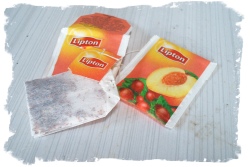
You can use pretty much any type of tea bags to color paraffin wax, but don't expect to get bright and vivid colors.
For example, the tea I used to illustrate this article is a peach / rosehip blend that makes a deep red cuppa. In paraffin, however, all I was able to achieve was a bright yellow color in liquid state and, as the picture shows, a cream color once the candle cooled off.
But don't be afraid to experiment anyway: I have not tried all the tea sorts available on the market.
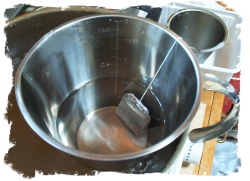
Heat the wax in the double boiler until it reaches a temperature close to 203°F. The wax needs to be very hot to "soak up" the color of the tea.
Once the right temperature is reached, dip the two (or more, if you want to get a darker shade) tea bags in the paraffin and leave them in there for at least 20 minutes.
Regularly moving the tea bags up and down in the hot paraffin will help them release their color.
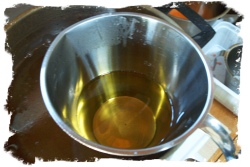
After about 20 minutes, the paraffin has soaked up all the color it possibly can and turned a pretty yellowish/greenish, natural looking shade.
To give the final result an even creamier look, you can add a very small amount of either soywax or vegetable shortening. And if you're looking to give your candle a really natural and rustic look, I highly recommend you use the cold pour technique (more on that in the article 3 easy surface techniques for your candles).
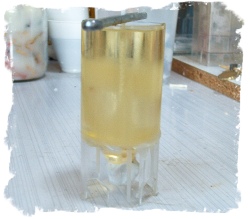
When you like the color of the wax, remove the melting pot from the double boiler. Leave the thermometer in the liquid wax and let its temperature drop to about 167°F (or even further down if you wan to use the cold pour technique).
Once the ideal temperature is reached, pour the paraffin wax into the (prepared) mold. Then, follow the usual steps (for a reminder, take a look at the article Pillar candles - How to make them?).
As is always the case, the color of the wax will change considerably as the wax cools off (just like it does with "classic" dyes: paraffin always ends up with a lighter shade in its solid state versus liquid).
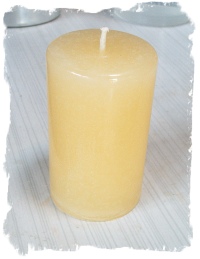
That's it, you're done!
Depending on the sort of tea you used and the number of tea bags you dipped in the wax, it is not impossible that the tea gifted your candle some of its scent.
But even if that's not the case, you now have a candle with a beautiful, natural shade, difficult or impossible to obtain with classic candle dye. A very good starting point if you want to develop a "nature" range of candles.
 Thanks a bunch!
Thanks a bunch!

